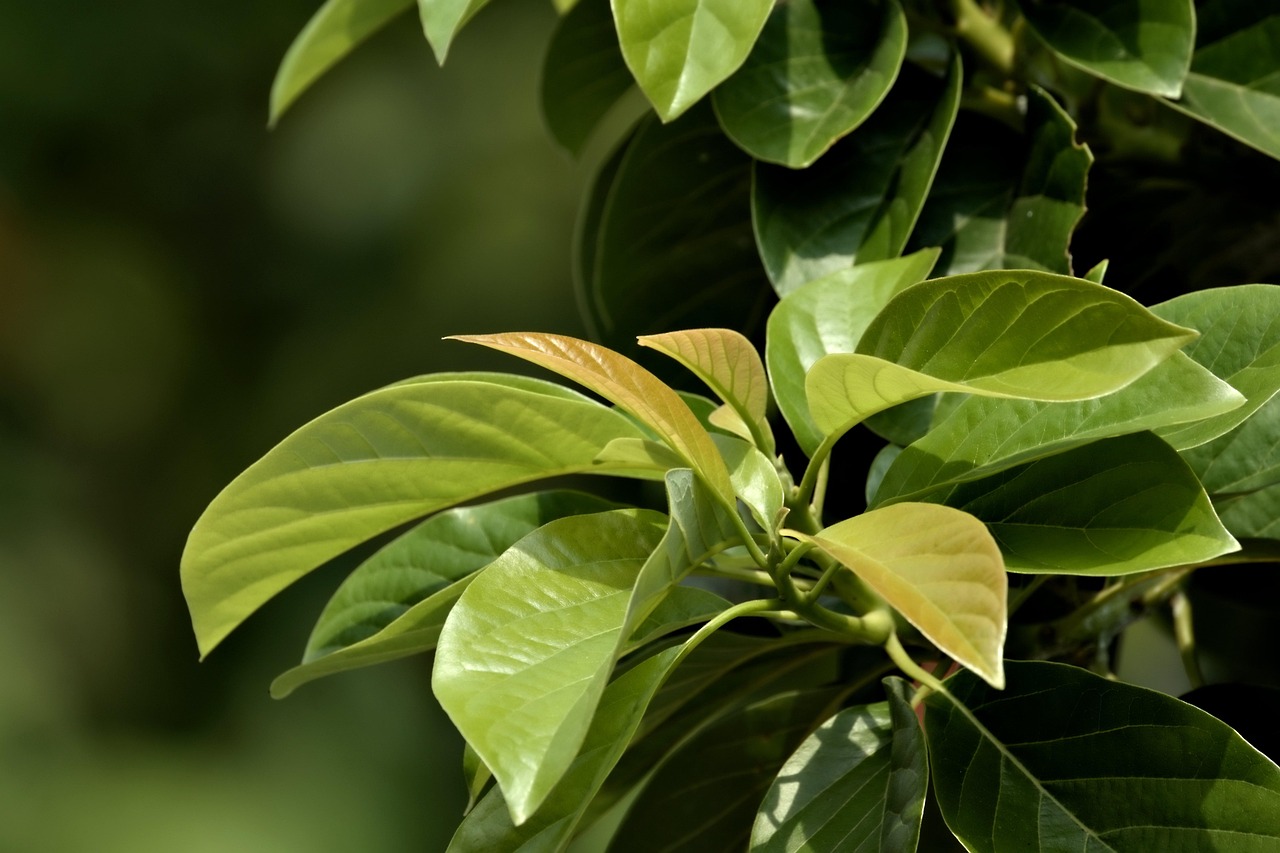A tree symbolizes growth, resilience, and interconnectedness in personal life. Just as a tree develops roots, branches, and leaves, individuals grow through experiences, relationships, and challenges. This connection highlights the importance of nurturing one’s environment for holistic development.
Trees are often regarded as powerful metaphors for human growth. They start as small seeds, much like individuals who begin their lives with immense potential. As conditions improve and support systems are established, both trees and people flourish. In this article, we will explore the various ways a tree relates to personal life and human growth.

The Life Cycle of a Tree and Its Parallels to Human Development
Understanding the life cycle of a tree can provide insights into personal development. The journey of a tree from seedling to maturity mirrors the stages of human growth. Here are the primary stages of a tree’s life cycle:
| Stage | Description |
|---|---|
| Seed | The beginning stage, representing potential and opportunity. |
| Seedling | Initial growth phase where roots develop, symbolizing the establishment of values and beliefs. |
| Young Tree | This stage signifies growth and adaptability, paralleling the exploration of identity in adolescence. |
| Mature Tree | Fully developed trees provide shade and shelter, reflecting wisdom and stability in adulthood. |
Each stage of a tree’s life is influenced by external conditions such as soil quality, sunlight, and water availability. Similarly, human development is shaped by environmental factors like family support, education, and social interactions. The nurturing of both trees and individuals is crucial for reaching their full potential.
The Importance of Roots
Roots are essential for a tree’s survival, anchoring it to the ground and absorbing nutrients. In human life, roots represent the foundation of our identity. These roots can include:

- Family background
- Cultural heritage
- Personal experiences
- Education
Just as deep roots help a tree withstand storms, strong personal foundations enable individuals to face life’s challenges. When individuals have a solid sense of self, they are better equipped to navigate difficulties and adapt to change.
Branches and Growth
The branches of a tree symbolize the various paths one can take in life. As trees grow taller, they develop numerous branches reaching out in different directions. This imagery reflects how human beings explore diverse opportunities:
- Career choices
- Relationships
- Hobbies and interests
- Personal goals
Each branch signifies a new experience or decision that contributes to personal growth. Just like branches that compete for sunlight, individuals may face competition and challenges in their pursuits. However, by learning from these experiences, they can expand their horizons and build resilience.

Leaves: The Reflection of Change
Leaves play a crucial role in a tree’s life by facilitating photosynthesis. They also change colors with the seasons, symbolizing transformation in our lives. Human beings undergo various changes throughout their lives that can be compared to the seasonal shifts in trees:
- Spring: New beginnings and opportunities for growth.
- Summer: Flourishing and enjoying the fruits of labor.
- Autumn: Reflection on achievements and preparing for change.
- Winter: Resting and rejuvenating before renewal.
This cyclical process emphasizes that change is a natural part of life. Embracing these transformations allows individuals to grow stronger and more resilient over time.
The Interconnectedness of Trees and Humans
Trees do not exist in isolation; they are part of a larger ecosystem. Similarly, humans thrive within communities. Relationships with others provide support and encouragement, just as trees depend on their environment for nourishment. This interconnectedness fosters collaboration and shared growth.

In summary, the relationship between trees and human growth illustrates the importance of nurturing our foundations, exploring new paths, embracing change, and fostering connections with others. Understanding these parallels can inspire personal development and enhance our overall well-being.
The Role of Environment in Personal Growth
The environment plays a crucial role in the growth of both trees and humans. Just as trees require the right conditions to thrive, individuals need a supportive atmosphere to reach their full potential. This section will explore how various aspects of the environment influence personal development.
Nurturing Soil: Foundations of Support
Soil is essential for a tree’s growth. It provides nutrients that help trees develop strong roots. In human life, the “soil” represents our support systems, which can include:
- Family: The first source of support and love, shaping our values and beliefs.
- Friends: Peers who offer companionship and emotional support, enriching our lives.
- Mentors: Individuals who guide and inspire us, helping us navigate challenges.
- Community: The broader environment that fosters connections and opportunities for growth.
Just as poor soil stunts a tree’s growth, a lack of support can hinder personal development. It is important to cultivate positive relationships and seek out environments that nurture growth.
The Influence of Sunlight: Motivation and Inspiration
Sunlight is vital for trees as it enables photosynthesis, which fuels their growth. In human life, sunlight symbolizes motivation and inspiration. Factors that act as “sunlight” for individuals include:
- Passion: Pursuing interests that ignite enthusiasm and drive.
- Goals: Setting clear objectives to provide direction and purpose.
- Positive Reinforcement: Encouragement from others that boosts confidence and motivation.
- Personal Achievements: Celebrating milestones that reinforce self-worth and determination.
When individuals feel motivated, they are more likely to take risks and explore new opportunities. This sense of energy can lead to significant personal growth, much like how sunlight fuels the expansion of a tree’s branches.
The Seasons of Life: Embracing Change and Growth
Just as trees experience seasons, humans go through various phases in life. Each season brings unique challenges and opportunities for growth. Understanding these seasonal changes can help individuals navigate their personal journeys effectively.
Spring: New Beginnings
Spring is synonymous with renewal and new beginnings. It is during this time that trees blossom and grow rapidly. Similarly, in human life, spring represents:
- New opportunities for education or career changes.
- The birth of new ideas or projects.
- A time to set fresh goals and intentions.
This season encourages individuals to embrace change and explore new avenues for growth.
Summer: Flourishing and Growth
In summer, trees reach their full potential, showcasing vibrant leaves and abundant fruit. This phase reflects a time in human life when:
- Individuals achieve their goals and realize their dreams.
- Relationships deepen and flourish.
- A sense of fulfillment and joy permeates daily life.
This period emphasizes the importance of savoring achievements and enjoying the fruits of one’s labor.
Autumn: Reflection and Preparation
As trees prepare for winter, they shed their leaves, making way for rest and renewal. Autumn in human life signifies:
- A time for self-reflection on accomplishments.
- Preparation for future challenges or changes.
- A chance to let go of unproductive habits or relationships.
This period encourages individuals to assess their journeys, learn from experiences, and prepare for what lies ahead.
Winter: Rest and Renewal
Winter may seem dormant for trees; however, it is a crucial time for rejuvenation. In human life, winter represents:
- A period of rest and self-care after a busy season.
- A time to recharge and reflect on personal goals.
- An opportunity to plan for the future with renewed energy.
This season reminds individuals that rest is essential for sustained growth and that every cycle has its place in the journey of life.
Cultivating Resilience: Lessons from Trees
Trees face various challenges throughout their lives, such as storms, diseases, and droughts. Their ability to adapt and survive offers valuable lessons in resilience for humans. Understanding how trees respond to adversity can inspire individuals to cultivate their own resilience.
Adaptation to Environment
Trees often adapt to their surroundings by altering their growth patterns. For instance, they may grow shorter branches on one side to balance themselves after a storm. Similarly, humans can learn to adjust their approaches based on life’s challenges:
- Flexibility: Being open to change helps navigate unexpected circumstances.
- Problem-Solving: Finding creative solutions when faced with obstacles fosters personal growth.
- Perseverance: Continuing to push forward despite setbacks builds strength and character.
This adaptability is crucial for overcoming life’s hurdles and achieving personal goals.
Building Strong Connections: The Community Aspect
A tree thrives not only through its own growth but also through its relationships with other plants and organisms in its environment. This interconnectedness reflects the importance of community in human life. Strong connections with others can significantly enhance personal development and growth.
The Support of a Community
Trees often grow in forests or groves where they support one another. For instance, they may share nutrients through their root systems or provide shade for each other. In human life, community relationships can provide similar benefits:
- Emotional Support: Friends and family provide reassurance during tough times, fostering resilience.
- Shared Resources: Communities can pool resources, making it easier to achieve common goals.
- Networking Opportunities: Connections can lead to new job prospects or collaborations.
- Shared Experiences: Engaging in group activities can strengthen bonds and create lasting memories.
Building a strong community can enhance personal growth, providing a safety net during challenging times and encouraging exploration of new opportunities.
Collaboration and Teamwork
In nature, certain trees, like the redwoods, grow tall and strong because of their supportive root systems that intertwine with those of neighboring trees. This collaboration can be mirrored in human interactions:
- Team Projects: Working together on projects can generate innovative ideas and solutions.
- Mentorship: Learning from others’ experiences can accelerate personal growth.
- Community Events: Participating in local events fosters connections and a sense of belonging.
Collaboration encourages individuals to share their strengths and learn from each other, enhancing both personal and collective growth.
Overcoming Adversity: Lessons from Trees in Crisis
Trees face numerous challenges, including pests, diseases, and environmental changes. Their ability to withstand these issues offers valuable lessons for humans navigating adversity. Understanding how trees cope with crises can inspire resilience and problem-solving skills in individuals.
Survival Strategies of Trees
Trees employ various strategies to survive adverse conditions. For example:
- Shedding Leaves: Some trees lose their leaves during harsh winters to conserve energy. This act of letting go is a reminder for humans to release unhelpful habits or thoughts in times of stress.
- Thicker Bark: Trees may develop thicker bark to protect themselves from diseases or pests. In human terms, building emotional resilience helps protect against life’s challenges.
- Deepening Roots: During droughts, trees send roots deeper into the ground in search of water. This illustrates the importance of digging deep within ourselves to find strength during tough times.
The survival strategies of trees demonstrate that adaptability and resourcefulness are essential for overcoming obstacles.
Coping Mechanisms in Human Life
Humans also have coping mechanisms that help them deal with adversity. These may include:
- Cognitive Restructuring: Changing negative thought patterns into positive ones to foster a healthier mindset.
- Mindfulness Practices: Techniques like meditation or yoga that promote emotional well-being and stress relief.
- Seeking Help: Reaching out to friends, family, or professionals when faced with challenges is crucial for maintaining mental health.
By adopting effective coping strategies, individuals can build resilience and better navigate through life’s inevitable challenges.
The Legacy of Growth: Leaving a Positive Impact
Trees contribute to their environment not just by existing but by leaving a legacy. They provide oxygen, improve air quality, and support wildlife. In human life, creating a positive impact reflects the legacy one leaves behind. Personal growth can lead to meaningful contributions to society.
Impact on Others
As individuals grow, they have the potential to influence those around them positively. Some ways this can manifest include:
- Mentoring Others: Sharing knowledge and experiences helps uplift others on their journeys.
- Community Involvement: Participating in local initiatives fosters social responsibility and enhances communal ties.
- Advocacy: Standing up for causes can inspire others to take action and create meaningful change.
The impact one has on others creates ripples of change that can extend far beyond individual actions. Just as trees support ecosystems, personal growth can lead to collective improvement in communities.
Sustainability and Environmental Awareness
Trees play an essential role in maintaining environmental balance. Similarly, individuals can contribute to sustainability efforts through conscious choices, such as:
- Reducing Waste: Practicing recycling and minimizing consumption helps protect natural resources.
- Conserving Energy: Making environmentally friendly choices reduces one’s carbon footprint.
- Advocating for Change: Supporting policies that promote environmental conservation leads to broader societal shifts.
A commitment to sustainability not only benefits the planet but also fosters personal growth by aligning values with actions.
The Interplay of Personal Growth and Nature
The relationship between trees and human growth extends beyond mere symbolism. It highlights the interplay between personal development and the natural environment. As individuals grow, they can draw inspiration from nature, learning to appreciate the interconnectedness of life. This connection encourages a deeper understanding of how personal choices impact the world around us.
Nature as a Teacher
Nature serves as an excellent teacher for personal growth. Observing trees and their life cycles can impart valuable lessons about patience, resilience, and community. Some lessons include:
- Patience: Just as trees take years to mature, personal growth is often a gradual process that requires time and persistence.
- Adaptability: Trees adapt to their environment, reminding us to be flexible and open to change.
- Collaboration: Trees thrive in communities, emphasizing the importance of relationships and teamwork in our lives.
By learning from nature, individuals can cultivate qualities that lead to a more fulfilling life.
Mindfulness and Connection to Nature
In our fast-paced world, taking time to connect with nature can enhance mental well-being. Mindfulness practices that involve nature can contribute positively to personal growth. Engaging with nature through activities such as:
- Nature Walks: Spending time outdoors allows for reflection and relaxation.
- Gardening: Growing plants or trees fosters a sense of responsibility and connection to the earth.
- Outdoor Meditation: Practicing mindfulness in natural settings can deepen one’s sense of peace and clarity.
These activities help individuals reconnect with themselves and their surroundings, promoting inner harmony and growth.
The Legacy of Trees in Urban Spaces
Urban areas often face challenges related to personal well-being and community cohesion. However, integrating trees and green spaces within cities can improve quality of life. Benefits include:
- Improved Air Quality: Trees filter pollutants and provide fresh oxygen, contributing to better health.
- Aesthetic Enhancement: Greenery enhances the beauty of urban environments, creating inviting spaces for relaxation.
- Community Engagement: Parks and green spaces encourage social interactions and foster community spirit.
By recognizing the value of trees in urban settings, communities can cultivate environments that support both individual and collective growth.
Conclusion
The relationship between trees and personal growth reveals profound insights into the human experience. Trees exemplify resilience, adaptability, and interconnectedness—qualities essential for personal development. By embracing these lessons, individuals can learn to navigate life’s challenges while fostering strong connections with others.
The journey of personal growth is much like the life cycle of a tree. It involves nurturing roots, branching out into new experiences, embracing seasonal changes, and ultimately leaving a positive impact on the world. By understanding how trees relate to human life, we can cultivate our own growth while appreciating the beauty and complexity of nature.
Ultimately, recognizing this connection encourages us to become more mindful stewards of our environment. In doing so, we not only enhance our personal lives but also contribute to the well-being of our communities and the planet as a whole.
